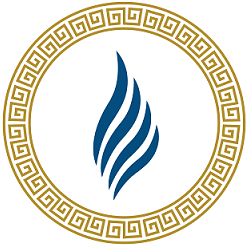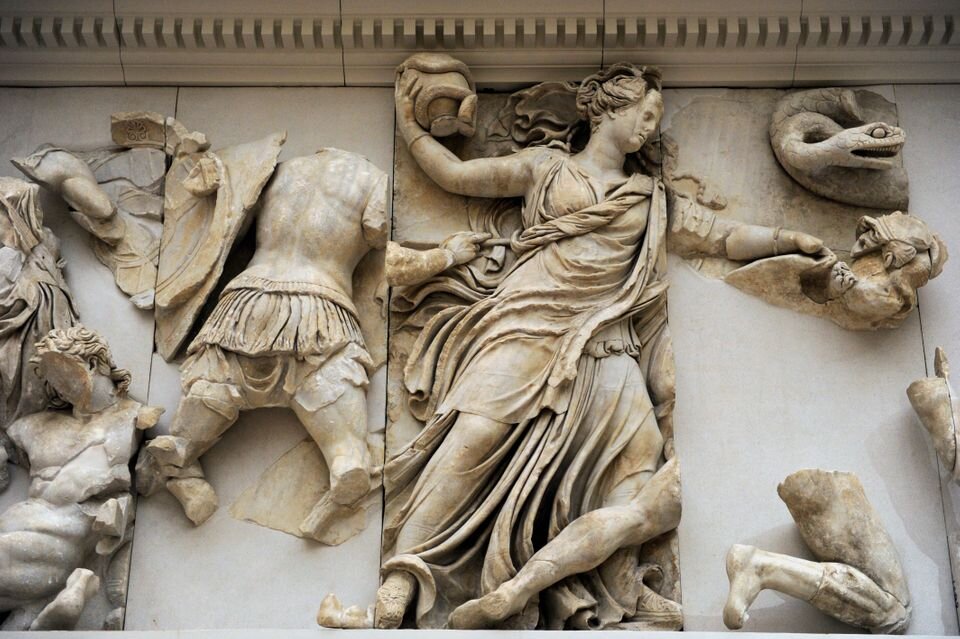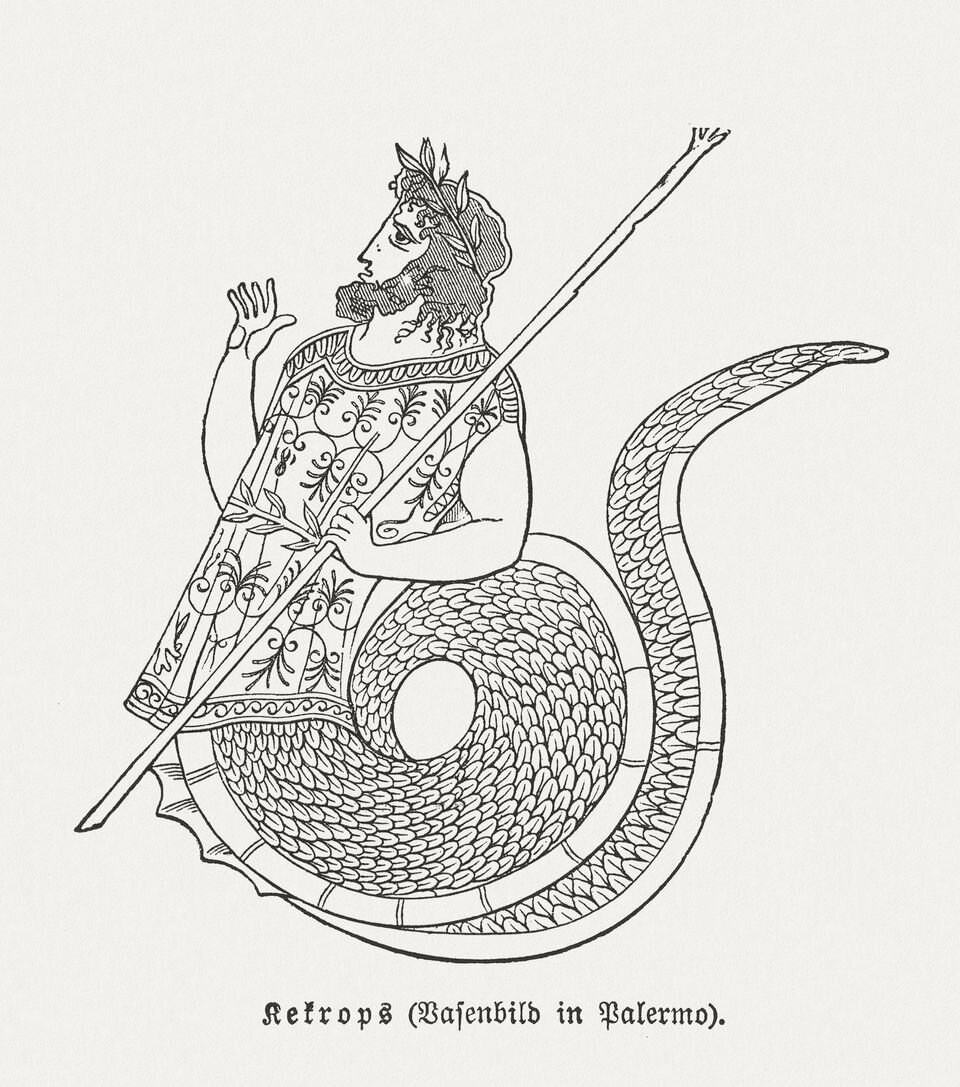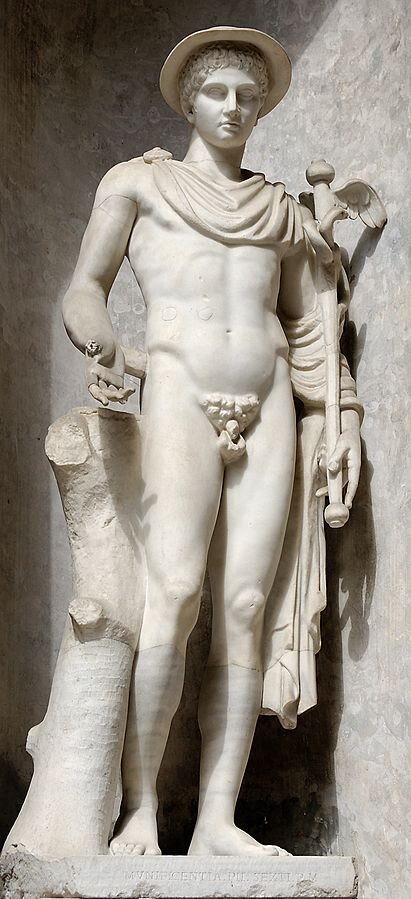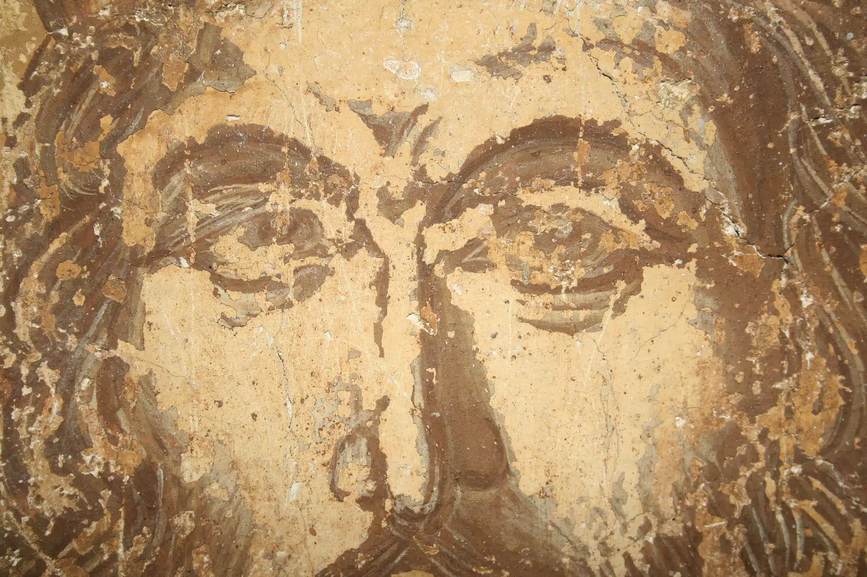Beyond religions and ideologies, there is a primal fear of beings that are quite different and incomprehensible to us. The snake crawls, it is cold, it comes silently and suddenly. It is an instinctive fear.
Medusa head by Gianlorenzo Bernini in Musei capitolini
The religious reception ties into this, as does the Freudian interpretation that corresponds to the fear of the penis.
A physician examines a sick child while Asclepius is watching. (Photo: Hulton Archive / Getty Images)
Understanding and reconciling with snakes and other animals, first by shamans and then by priests, gave them a sense of communication with the "beyond". Something similar is sought, perhaps unconsciously, by those who ostentatiously handle snakes or other animals.
The answer to the question is that they induce a primal fear.
The serpent and its relationship to the transmission of knowledge in the Old Testament have been commented on from many angles. But it is not what creates fear of snakes.
After all, there is not only fear. There are snakes in Greece that are respected and protected in many areas like spitofido, Konaki and Lafiatis in some areas.
Archive photo from 2008 - Kefalonia, the snakes of Virgin Mary, on the day of August 15 in the village of Arginia.
There is also the Agiofido(Saint snake), held by the faithful on August 15 in the church of Panagia in a village on Kefalonia.
So the attitudes towards snakes are many and varied.
Snakes in ancient Greece
Representations of snakes were used in vases in ancient times, as decoration, but also as a symbol of death. It was also the symbol of Asclepius, as we see in all the statues of the god of medicine. In other words, there were many different ways the ancients saw snakes.
In funerary vessels, we find representations of serpents along with representations of other types that are geometric in nature and mainly symbolize death. In others, they symbolize the evil forces of the world.
Some of the mythical creatures presented below have elements of snakes:
Chimera
The Chimera had the body of a goat, the head of a lion, and its tail ended in a snake. In other conceptions, she has many heads: lion, goat and dragon.
Echidna
Echidna. Sculpture by Pirro Ligorio 1555, Parco dei Mostri (Monster Park), Lazio, Italy.
Echidna, the mother of the Chimera and other monsters, had the face of a beautiful woman and the body of a reptile.
Typhoon
Zeus aiming his thunderbolt at a winged and snake-footed Typhon. Chalcidian black-figured hydria (c. 540–530 BC), Staatliche Antikensammlungen (Inv. 596).
Typhoon, Echidna's companion, had a hundred dragon heads on his shoulders. His body looked like a human up to his waist, but from the waist down it had the body of coiled snakes. Fire came out of his eyes and all sorts of screams and whistles came out of his head. Typhoon fought Zeus and was defeated.
The Lernaean Hydra
Gustave Moreau's 19th-century depiction of the Hydra, influenced by the Beast from the Book of Revelation
The Lernaean Hydra was the daughter of Typhoon and Echidna, a water monster with reptilian features and many heads - serpents. When Hercules cut off one, two others sprouted in its place.
Medusa
Medusa, marble sculpture by Gian Lorenzo Bernini, 1630; in the Capitoline Museums, Rome.
© piotrwzk/Shutterstock.com
The fearsome Medusa had snakes on her head instead of hair and turned anyone who looked at her to stone.
Erinyes
The heads of the Erinyes were wrapped in snakes, similar to the Medusa Gorgo, and their whole appearance was frightening and repulsive.
Cerberus
Heracles, wearing his characteristic lion-skin, club in right hand, leash in left, presenting a three-headed Cerberus, snakes coiling from his snouts, necks and front paws, to a frightened Eurystheus hiding in a giant pot. Caeretan hydria (c. 530 BC) from Caere (Louvre E701)
Cerberus was a dog with three heads and a serpent's tail. He guarded the entrance of Hades and would not let the souls go out or the living pass.
Giants
In the Gigantomachy from a 1st-century AD frieze in the agora of Aphrodisias, the Giants are depicted with scaly coils, like Typhon
The Giants had the form of a man, but they were terrible in appearance, huge in stature, and irresistible in strength. Their bodies were scaly and ended in a lizard's tail.
Apollo killing Python
Python was a chthonic deity. It had the body of a serpent and guarded the Oracle of Delphi.
But there were also heroes - idols in the form of snakes:
Cecropas (Cecrops)
Representation of Cecrops I
Cecropas, the mythical founder of the first city of Athens, was a chthonic deity usually depicted from the center and above as a man and from the center and below as a dragon.
Erichthonius
Birth of Erichthonius: Athena receives the baby Erichthonius from the hands of the earth mother Gaia, Attic red-figure stamnos, 470–460 BC, Staatliche Antikensammlungen
Erichthonius, the mythical king of Athens who founded Panathinaikos, was half man and half serpent. He was born as a serpent and Athena transformed him into a man.
There are also heroes who fight with snakes, such as Hercules, who killed two snakes in his cradle and later Lernaean Hydra.
Heracles as a boy strangling a snake (marble, Roman artwork, 2nd century AD). Capitoline Museums in Rome, Italy
Two sea serpents sent by Poseidon kill Laoconda(Laocoön).
Laocoön and His Sons
Serpents symbolized fertility, but besides Dionysus, they are also associated with austere deities such as Artemis, Athena and later Cybele. But also Zeus himself (as Zeus Filios, Zeus Meilichios, or as Agathos Daimon) is often depicted with a snake next to him.
Charon of Hades, who transported the souls of the dead, is also depicted with a snake beside him. Symbol of death.
But snakes were also protectors:
Sanctuary of Poleada Athena
The house serpent of the Acropolis lived in a temple of Poleada Athena, where are the tombs of the serpent Erechtheus and Erichthonius. This temple was destroyed by the Persians.
The symbols of the Dioscuri in Sparta were two serpents.
According to various myths, the seer Teiresias was associated with snakes, both positively and negatively. While walking at Mount Kyllini he observed two snakes mating. He struck them with his stick and killed the female. He then transformed into a woman and became a famous hetaira. Seven years later, in the same place, he again saw two snakes mating, and by killing the male this time, he became a man again. According to another legend, Teiresias was blinded by Athena because he happened to see her naked while bathing. But then Athena was moved by the entreaties of his mother Teiresias and ordered the serpent Erichthonius to clean Teiresias' ears with its tongue in order to understand the howling of the prophetic birds.
The god Hermes has as his symbol the caduceus, a thin staff of laurel or olive wood, around which are wound two serpents whose heads face each other. Hermes once used his staff to separate two snakes that were fighting with each other. The staff with the two serpents became a symbol of unity and the ending of discord (a story that contrasts with that of Tiresias). According to others, the caduceus is a symbol of fertility. But then it became a symbol of commerce.
Hermes carrying a winged caduceus upright in his left hand. A Roman copy after a Greek original of the 5th century BC.
Hygeia, the daughter of Asclepius, is depicted from the 5th century BC with a snake climbing on her shoulder. While Asclepius, the god of medicine, is always depicted with a snake around his staff. Which later became a symbol of medicine.
1st century Roman statue of the goddess
